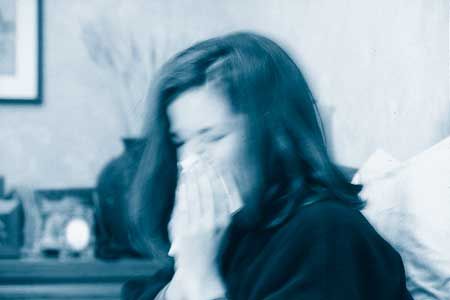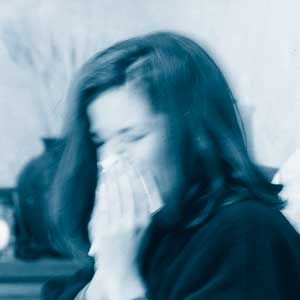
Remember the first time you looked at a drop of drinking water under a microscope in Bio class and saw the millions of tiny organisms it contained? Well, the air in your home is also filled with life. Most of it is harmless. But for people who suffer from asthma and allergies, all of those little bits of dust, dander, pollen, mold and, yes, microscopic life—collectively called allergens—can be a problem. What’s more, these allergens have a penchant for gathering in your home.
Some homeowners undertake extreme measures to deal with air-quality issues in their homes. Many of these efforts are unnecessary and ineffective, says Dr. David Cugell, Bazley Professor of Pulmonary Diseases at Northwestern University Medical School and consultant to the American Lung Association. But there are a number of ways you can reduce the quantity of allergens in your home. The ones we’ll show you are easy to do and don’t cost much.
Keeping It Clean
Decreasing the amount of dust in your home is the single most important thing you can do to control allergens. Because dust is sticky, it attracts and holds dust mites, pet hair and dander, mold and mildew. It also settles on floors and furniture, so you should concentrate on cleaning exposed horizontal surfaces.
Effective vacuuming. While they are good at picking up dirt and dust, many vacuums don’t hold onto the finer particles—they just redistribute them. Try this simple test: Vacuum an area in direct sunlight and then step back and look at the machine. The sunlight will let you see how much dust is coming from the vacuum. If there’s a lot, consider a new model with special bags or filters that trap microscopic particles from major manufacturers like Hoover, Eureka and Oreck. Prices of these “low-emitting” vacuums are dropping; some are available in the $200 range. The most effective vacuums use HEPA (high-efficiency particulate-arresting) filters, although even these can’t trap all allergens.
Because you spend much of your time in the bedroom, pay special attention to cleaning these areas of the house. Don’t forget to vacuum the registers of a forced-air heating and cooling system as well as inside closets. Try to vacuum and dust when family members who are sensitive to dust are not at home.
Carpet concerns. Wall-to-wall carpeting and rugs are a haven for dust and animal allergens. Frequent vacuuming will decrease their carrying ability; some rugs can be washed. If it comes down to a choice between carpeting and wood flooring, remember that bare wood floors accumulate only 10 percent the amount of allergens as carpeting. A compromise: Bare flooring with washable area rugs.
This doesn’t mean you should automatically rip up existing carpet; experts are divided about the benefits of removing carpeting for those who are not afflicted with serious asthma or allergies. Carpeting installed without a moisture barrier directly over concrete, however, is a different case. The carpet pulls moisture from the slab, creating a petri dish for mold, mildew and bacteria.
Discouraging mites. While vacuuming and dusting at least once a week help with dust allergens, they don’t kill dust mites. To keep them under control, place mattresses, box springs and pillows in plastic cases and cover the zipper with tape. Wash bed linens and stuffed toys weekly in 130°F water; wash all bedding and fabric window treatments once a month. Use a meat thermometer to determine the temperature of your wash water. If it isn’t hot enough, set the water heater higher. All items should be dried in a dryer or in direct sun.
Decreasing fumes. If someone in your household is sensitive to fumes and odors produced by household cleaners, paints, pesticides or gardening supplies, store these products in sealed containers in well-ventilated nonliving areas, like a garage. Also be sure they aren’t stored near return-air ducts so fumes aren’t pulled into other areas. Try to buy small amounts of these products so there’s less remaining around the house. Better yet, eliminate what you can and switch to unscented, nontoxic or natural alternatives for products (including cosmetics) you must use. For example, use cedar chips instead of mothballs with paradichlorobenzene.
The particulates contained in smoke are serious irritants to everyone. Consider making smokers take their habit outside, and for the sake of sensitive individuals, avoid wood fires in the fireplace and aromatherapy candles.
The simple act of removing your shoes before entering your home will also decrease the amount of pesticide, garden fertilizer, mold and pollen you track into the house.

Ventilating the Area
Your mom was right. Fresh air is good for you. Ventilation removes indoor air and adds outside air to dilute the overall level of allergens. Exhaust fans in the kitchen and bathrooms will help remove odors and moisture, but they must be vented to the outdoors to work properly. A clothes dryer, attic and crawl space should also be vented outdoors.
HVAC help. Very tightly constructed homes—those with wall and ceiling insulation, continuous vapor barriers and weather-stripped insulated windows and doors—might need a whole-house ventilator. These can often be added to a forced-air heating system; leave this job to a heating and cooling contractor.
Before you start using any heating or cooling appliances, have them inspected and cleaned by a professional. The service call should include cleaning coils, drain pans, fans and heat exchangers; adjusting heating products to meet operating specifications; inspecting any venting system and combustion air supply; and checking that fresh-air intakes are separated from appliance vents to prevent recirculation of combustion gases.
If, as part of your forced-air system, return vents are located in hallways, be sure to keep doors open to rooms without return vents. Otherwise air pressure and humidity differences between rooms could increase the concentration of allergens.
Lowering humidity. Dust allergens and mold and mildew thrive on humidity. While relative-humidity levels between 30 and 50 percent are generally recommended for most households, a level of 35 to 45 percent may be more comfortable for allergy or asthma sufferers. Michael Lamb, energy specialist with the U.S. Department of Energy Conservation and Renewable Energy Inquiry and Referral Service, says homeowners can pick up a relative-humidity gauge that’s accurate within a few percent at electronic and hardware stores for $10 to $20.
You can control room humidity with a humidifier or dehumidifier. However, says Dr. Cugell, “Room humidifiers are easily contaminated by mold and bacterial growth and are a known source of considerable respiratory problems.” So check it frequently for mold and mildew, add fresh water every day to a room humidifier and clean it every three days. You should also check a dehumidifier on a regular basis.
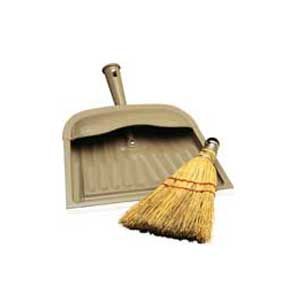
Clearing the Indoor Air
Myth 1: You have to get rid of pets.
All pets produce allergens, like hair and dander (dead skin cells and dried saliva). Even aquariums can produce mold if not properly cleaned. But unless someone in your household is severely allergic, you don’t necessarily have to get rid of your cat or dog. Bathing a dog once a week or wiping down a cat with a wet cloth can reduce dander to bearable levels for many. At the very least, keep pets out of bedrooms and off furniture.
Myth 2: Portable ion generators, also called energized-oxygen or pure-air filters, are a good way to control indoor pollution and improve air quality.
These devices work by producing ozone from oxygen. Manufacturers often claim or imply that pollutants cling to part of the ozone molecule and that purifies the air. However, according to the Environmental Protection Agency (EPA), there is no evidence that ozone removes indoor pollutants. In fact, ozone can damage lungs when inhaled in large amounts. Even relatively small amounts can cause chest pain, coughing, shortness of breath and throat irritation. Ozone can also worsen asthma.
Myth 3: Cleaning air ducts will improve air quality inside a home.
According to the EPA, there is no proof that duct cleaning reduces allergens and dust inside homes.
Improper cleaning can actually increase levels. Nor is there any evidence that a small amount of dust in air ducts is a health risk. However, insulated ducts that get wet should be replaced. Only ducts that are visibly clogged with an excessive amount of debris or dust or infested with rodents or insects, or those with substantial visible mold and mildew, should be cleaned.
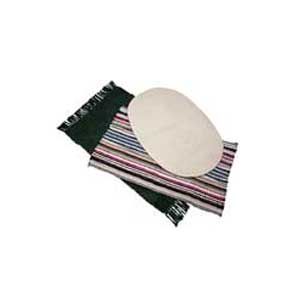
Filtering the Indoor Air
If the forced-air system in your home is equipped with inexpensive fiberglass filters, you should upgrade them to high-efficiency media filters. Standard room air conditioners usually do a pretty good job of filtering pollen, ragweed and spores if you keep the coils on the unit clean and replace the filters as frequently as indicated by the manufacturer.
Adding an air cleaner. If cleaning, ventilation and routine filter maintenance on existing systems don’t provide relief, consider an air cleaner. There are three types: media, electrostatic and hybrids. Media filters use physical barriers (media) and coatings to trap particles. The finer the media and the greater the surface area, the better it is at trapping small particles. Electrostatic filters use charged plates that create an electrical field to trap particles. Hybrid filters use a combination of these technologies. Ion generators are in a category of their own and should be avoided.
Filter facts. Although a new federal system for testing the efficiency of air filters will be finalized sometime this autumn, many manufacturers are already using it. These Minimum Efficiency Reporting Values (MERV) test how well filters remove small particles from the air; the higher the MERV number, the more efficient the filter. “This rating is really useful for comparing medium- and high-efficiency filters,” says H.E. Barney Burr-oughs, chairman of the American Society of Heating, Refrigeration and Air Conditioning Engineers committee on the new standard. “The rating tells people what the difference is between filters, and takes away a lot of the smoke and mirrors of the manufacturer’s claims.”
Most of these more efficient filters can be used on any forced-air system, but may require some retrofitting. Have your heating and cooling contractor make sure the new filter won’t reduce airflow to a dangerous level. You won’t be as comfortable, and you could overtax the system. This potential airflow reduction, called pressure drop, should be considered when the filter is new (initial pressure drop) and when it’s full (final pressure drop).
It’s uncomfortable and even dangerous to live in a house where the air either makes you sick or aggravates allergies and asthma. But with a few simple steps you may be able to cut down on the irritants in your home—and breathe a sigh of relief.
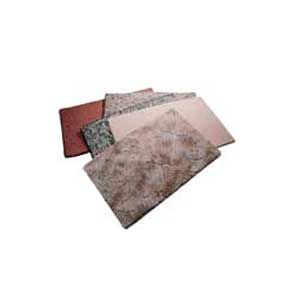
Where to direct your indoor air quality questions
You should discuss any questions you have about breathing disorders or other air-quality-related health concerns with your family doctor. You’ll find additional information on these topics by contacting the agencies and organizations listed below:
Allergy and Asthma Network
800/878-4403
American Lung Association
800/LUNG-USA
The association offers homeowners the following publications:
- “Home Control of Allergies and Asthma”
- “Indoor Air Pollution Fact Sheet: Household Products”
- “Moisture Control Tips for Homeowners.”
Asthma and Allergy Foundation of America
800/727-8462
Asthma Information Center
Journal of the American Medical Association
800/621-8335
Energy Efficiency and Renewable Energy Clearinghouse
800/363-3732
“Home Moisture Problems”
U.S. Consumer Product Safety Commission
800/638-2772
The CPSC provides information and fact sheets on specific product and material
hazards.
Indoor Air Quality Information Clearinghouse
800/438-4318
(you can call Monday-Friday, 9 a.m.-5 p.m. ET)
The Indoor Air Quality Information Clearinghouse distributes U.S. Environmental Protection Agency publications, answers your questions and makes referrals to other nonprofit and government organizations. The organization offers a wide range of publications related to indoor-air quality, including:
- “The Inside Story: A Guide to Indoor Air Quality”
- “Indoor Air Pollution: An Introduction for Health Professionals”
- “Should You Have the Air Ducts in Your Home Cleaned?”
- “Ozone Generators that are Sold as Air Cleaners”
- “Use and Care of Home Humidifiers”
- “Biological Pollutants in Your Home”
You should discuss any questions you have about breathing disorders or other air-quality-related health concerns with your family doctor. You’ll find additional information on these topics by contacting the agencies and organizations listed below:
Bryant Heating and Cooling Systems
800/428-4326
Honeywell Inc
1985 Douglas Dr.
Golden Valley, MN 55422
800/345-6770
Lennox International
2140 Lake Park Blvd.
Richardson, TX 75080
800/9-LENNOX
April Aire
800/334-6011
Research Products
Box 1467
Madison, WI 53701-1467
608/257-8801
Johnson Controls
PO 591
Milwaukee, WI 53201
414/524-1200
WEB Products, Inc.
11 Lincoln St.
Kansas City, KS 66103
800/875-3212
